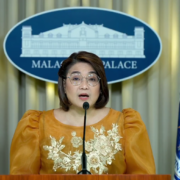‘An irreplaceable ally’ (2)
The Mutual Defense Treaty (MDT) is not a stand-alone pact. It’s powered by other agreements that outline the details—and minutiae—of the security alliance between the Philippines and the United States.
According to the US State Department fact sheet, the MDT “is enhanced by the 1998 Visiting Forces Agreement (VFA) and the 2014 Enhanced Defense Cooperation Agreement (Edca).”
While the VFA provides the “legal basis and status protections” for US troops and defense civilian personnel in the Philippines doing official business, Edca ”authorizes US forces access to agreed locations in the Philippines on a rotational basis, for security cooperation exercises, joint and combined military training activities, and humanitarian assistance and disaster relief activities.”
Interoperability
In 2017, both parties renewed the Mutual Logistics Support Agreement (MLSA), which is the legal mechanism for accessing locally sourced resources. The MLSA is a vital element of the security alliance, enabling the military forces to actively support each other in a variety of scenarios as it covers a wide range of logistical support, including supplies, services, and temporary equipment use. Besides logistics cooperation, the heart of the MLSA is interoperability, a buzzword in military alliances around the world, which allows allied forces to have access to compatible resources and systems, thus ensuring seamless training and operations.
Moreover, the longstanding bilateral, political, and military alliance with the US has led the Philippines to war-torn corners of the world since 1963. Our soldiers fought alongside GI troops during the Vietnam War, the Korean War, and the anti-terror wars in Iraq and Afghanistan following 9/11. Filipino soldiers joined the United Nations-led peacekeeping missions from the Golan Heights of Syria to Congo, Sudan, Haiti, Timor Leste, Darfur, Kosovo, and Liberia, among other conflict areas that have been the violent legacy of the last century.
America has shown gratitude by providing over $700 million in security assistance to the Philippines since 2015. But the security alliance is not a one-way street, either.
Foreign military sales
Ditching outdated military equipment, the Philippines has $1 billion in active government-to-government foreign military sales system with the US, allowing the former to buy C-130T transport aircraft, light support boats, and air search radars; 48 S70i Black Hawk combat utility helicopters worth $865 million; and $171.3 million in defense articles.
According to the fact sheet, the Philippines also bought from the US “firearms, close assault weapons, and combat shotguns ($56.1 million); launch vehicles, guided missiles, ballistic missiles, rockets, torpedoes, bombs, and mines ($ 35.8 million); and gas turbine engines and associated equipment ($25.3 million).”
In order to expand its defense capabilities in the region, the Philippines has turned to its friendly neighbors Japan and South Korea.
In 2015, our country returned to the supersonic era with the arrival of two FA-50 fighter planes from South Korea. We bought the combat planes along with 10 other jets for P18.9 billion, which was the Armed Forces of the Philippines’ biggest military upgrade at the time. It was a moment of joy and pride for the men and women of the Philippine Air Force when the FA-50 light fighter jets touched down at Clark Air Base, a former US Air Force base in Pampanga on Nov. 28, 2015.
The Philippine military, one of the weakest in Asia, has been building a minimum credible defense long before the tensions in the South China Sea arose. But modernizing our armed forces since 1995 has been rather slow due to limited funding provided by Congress.
Diversification
Still, the Marcos administration’s thrust is to diversify sources for acquiring military hardware and equipment. The latest example is India providing additional short-range Akash missiles worth $200 million.
Diversification is wise because it reduces supply chain disruptions, gives the country access to other technologies, expertise, and competitive price points, and builds stronger partnerships with other allies. This policy ultimately expands the Philippine defense network in the region.
Diversifying bilateral security relations into multilateral alliances has been encouraged by the US itself, starting with the trilateral alliance between the US, Japan, and the Philippines in 2024, mirroring Aukus, or the Australia-United Kingdom-US trilateral security partnership. There is also an informal Quad dialogue between the US, Japan, India, and Australia.
But wouldn’t it be strategic and cost-effective to move forward with the next logical evolution of these siloed alliances? Given that these nations are part of the US-led hub-and-spokes system, why not combine the various multilateral arrangements in the Indo-Pacific to form a unified alliance?
—————-
For comments: mubac@inquirer.com.ph


















